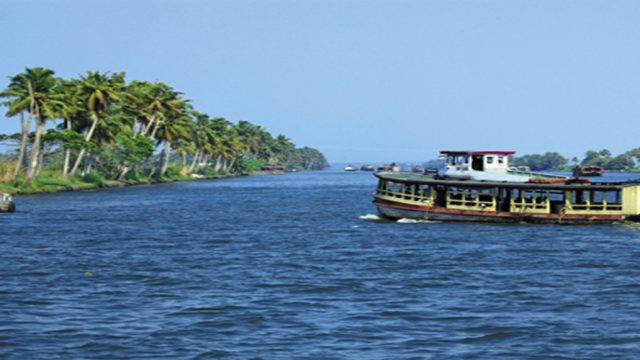In the last week of May every year, a number of people from Kerala, weary of the muggy days of summer, turn to the Meteorological Centre at Thiruvananthapuram with thinly disguised anticipation. This centre, built in 1840 by the musician-monarch Swathi Thirunal, is located at the top of a hill that offers stunning views of the sky over the Arabian Sea. In the days before the advent of radars and satellites, it was from this centre’s lofty setting that experts from the Indian Meteorological Department observed the tumultuous approach of the monsoon through their telescopes, and from here that the arrival of the monsoons in India was formally announced. India has undergone numerous changes since those days, but the entry of the highly awaited monsoons in Kerala is still signalled from this imperial structure in the capital of this coastal state.

The kingdom of Travancore emerged around Venad, a small province, in the 18th century, during the reign of King Marthanda Varma (1729–58). Under his rule, the kingdom extended its borders all the way to Kochi, annexing or absorbing the areas in between, including Attingal, Kollam, Kottarakkara, Kayamkulam, Kottayam, Meenachil and Ambalapuzha.
Today, a bus ride from the capital, Thiruvananthapuram, to Kochi offers a sense of this enchanting region. The bus slices through the heartland of the area that was formerly the kingdom of Travancore, past paddy fields, coconut groves, huge swathes of dark green rubber estates, rivulets and backwaters. The rivers Pampa and Meenachil, made famous by Arundhati Roy in The God of Small Things, the Vembanad Lake and the Ashtamudi backwaters, all blend to create a simultaneously tranquil and lively ambience.

Travancore’s heritage is enticing in terms of both the elegant structures left behind by the kings and the progressive policies the monarchs framed. There are two major impacts that the royalty of Travancore had on Kerala’s social development. First, they made primary education compulsory in the kingdom as early as the first half of the 19th century. Travancore became the first fully literate ‘native’ kingdom in India, a distinction that the state of Kerala achieved later in independent India as well. The second notable impact that the Travancore kings had on the social milieu was the historic decision of the royal house to open up temples to all Hindus, including the so-called ‘untouchables’, through the 1936 Temple Entry Declaration.
Subsequent to the carving out of the state of Kerala post-Independence in November 1956, comprising Travancore in the south, Malabar in the north and Kochi in between the two, Thiruvananthapuram continued to serve as the state’s capital. The modern world became aware of the city when the communists formed their government here the following year; the first time in history that a communist government came to power through the ballot. It was perhaps a quirk of history that the flag of the erstwhile princely state was also vermilion red.
Like in other parts of Kerala, residents of Travancore were receptive of, and assimilated, other cultures and external influences. This explains, in part, why the forest temple of Sabarimala is open to people of all faiths, and is now a symbol of secularism and communal harmony. At Erumeli, on the way to Sabarimala, one finds a mosque dedicated to Vavar, a Muslim friend of the temple’s deity, Ayyappan. Pilgrims to Sabarimala dance all the way to Vavar Palli, also known as the Nainaar Mosque, to pay their respects to Vavar, a ritual that’s known as Petta Thullal. The leaders of the local Muslim community welcome the Hindu pilgrims at the mosque.
Malayalam literature and art have historically flourished in the Travancore region. The doyen of Kathakali, Unnai Warrier, as well as the creator of the satirical, classical dance form Ottanthullal, Kunchan Nambiar, the renowned historian and novelist CV Raman Pillai and the poets Kumaranasan and Ulloor Parameswara Iyer collectively laid the foundations of humanistic and progressive culture through their work. Other noted artists from Travancore include painter Raja Ravi Varma and King Swathi Thirunal, who took Carnatic music to new heights by composing ragas that almost reflected the changing seasons of his beloved land.
In a way, Thirunal’s work reflects the depth to which the transformation of the hot, muggy summer to a cool, rich and enlivening monsoon affects this part of the country, which is indeed something special. Every year, the southwest monsoon keeps its date with the state in the first week of June; the sky darkens and a cool wind rushes in from the sea, thunder and lightning create a clamour to announce the onslaught of the monsoons, even as officials in the Thiruvananthapuram Meteorological Department prepare their notes. And as the first raindrops fall from the sky, the stress and heat of the summer months are washed away to create space for a new script for the future, with room for as many unexpected twists and turns as the past.




